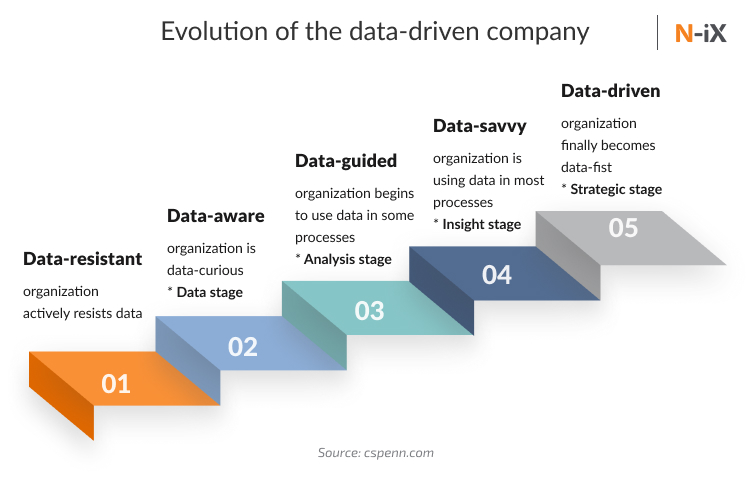
How to Implement Business Intelligence Software Successfully
In today’s fast-paced business environment, organizations are faced with an overwhelming amount of data from various sources. To stay competitive, businesses need to make informed decisions, identify trends, and optimize their operations. Business Intelligence (BI) software has become a crucial tool for companies to achieve these goals. However, implementing BI software successfully can be a complex and challenging process. In this article, we will provide a comprehensive guide on how to implement BI software successfully.
Defining Business Intelligence
Business Intelligence refers to the process of collecting, analyzing, and presenting data to support business decision-making. BI software helps organizations to transform their raw data into meaningful insights, enabling them to make informed decisions, identify new opportunities, and mitigate risks. BI software typically includes tools such as data mining, reporting, and analytics.
Benefits of Business Intelligence Software
Before we dive into the implementation process, let’s explore the benefits of BI software:
- Improved decision-making: BI software provides organizations with accurate and timely data, enabling them to make informed decisions.
- Increased efficiency: BI software automates many manual processes, freeing up staff to focus on high-value tasks.
- Enhanced customer insights: BI software helps organizations to better understand their customers, enabling them to tailor their marketing efforts and improve customer satisfaction.
- Competitive advantage: Organizations that use BI software can respond quickly to changes in the market, gaining a competitive advantage over their rivals.
- Cost savings: BI software can help organizations to reduce costs by identifying areas of inefficiency and optimizing their operations.
Pre-Implementation Planning
Before implementing BI software, organizations need to undertake some pre-implementation planning. This includes:
- Define the business case: Identify the business problems that the BI software is intended to solve, and define the expected benefits.
- Establish a project team: Assemble a team of stakeholders, including business users, IT staff, and project managers.
- Conduct a thorough analysis: Gather and analyze data to understand the organization’s current data landscape, including data sources, quality, and availability.
- Define the scope: Determine the scope of the implementation, including the data sources, reports, and analytics that will be included.
- Develop a project plan: Create a detailed project plan, including milestones, timelines, and resource allocation.
Implementation Steps
Once the pre-implementation planning is complete, the implementation process can begin. The following steps should be taken:
- Data preparation: Clean, transform, and load the data into the BI software.
- Software installation: Install the BI software, including any necessary hardware or infrastructure.
- Configuration: Configure the BI software, including setting up user roles, security, and data access.
- Report development: Develop reports, dashboards, and analytics to meet the business needs.
- Testing and quality assurance: Test the BI software to ensure that it meets the business requirements and is free from errors.
- Training and support: Provide training and support to end-users, including guidance on how to use the BI software and interpret the results.
Post-Implementation Review
After the implementation is complete, a post-implementation review should be conducted to:
- Evaluate the success: Assess the success of the implementation, including the benefits achieved and any challenges overcome.
- Gather feedback: Collect feedback from end-users, including suggestions for future enhancements and improvements.
- Identify areas for improvement: Identify areas where the BI software can be improved or expanded, including new reports, analytics, or data sources.
- Develop a maintenance plan: Create a plan for ongoing maintenance, including updates, backups, and technical support.
Best Practices for Successful Implementation
To ensure a successful implementation, the following best practices should be followed:
- Involve business stakeholders: Engage business stakeholders throughout the implementation process to ensure that the BI software meets their needs.
- Define clear goals and objectives: Establish clear goals and objectives for the implementation, including the benefits and outcomes expected.
- Use a phased approach: Implement the BI software in phases, starting with a small pilot project and expanding to other areas of the business.
- Provide ongoing training and support: Offer ongoing training and support to end-users, including guidance on how to use the BI software and interpret the results.
- Monitor and evaluate: Continuously monitor and evaluate the BI software, including its effectiveness and the benefits achieved.
Common Challenges and Solutions
During the implementation process, organizations may encounter common challenges, including:
- Data quality issues: Poor data quality can hinder the effectiveness of the BI software. Solution: Implement data quality checks and cleaning processes to ensure that the data is accurate and reliable.
- User adoption: Encouraging users to adopt the BI software can be a challenge. Solution: Provide ongoing training and support, and encourage users to share their experiences and feedback.
- Integration with existing systems: Integrating the BI software with existing systems can be complex. Solution: Work with IT staff to ensure that the BI software is integrated with existing systems, including data sources and infrastructure.
- Cost and budget: The cost of implementing BI software can be significant. Solution: Establish a clear budget and prioritize the implementation based on business needs and benefits.
Conclusion
Implementing Business Intelligence software successfully requires careful planning, execution, and ongoing support. By following the pre-implementation planning, implementation steps, and post-implementation review outlined in this article, organizations can ensure a successful implementation. Additionally, by following best practices, such as involving business stakeholders, defining clear goals and objectives, and providing ongoing training and support, organizations can maximize the benefits of their BI software. Remember, the key to a successful implementation is to focus on the business needs and outcomes, and to continuously monitor and evaluate the effectiveness of the BI software.
Closure
Thus, we hope this article has provided valuable insights into How to Implement Business Intelligence Software Successfully. We appreciate your attention to our article. See you in our next article!


